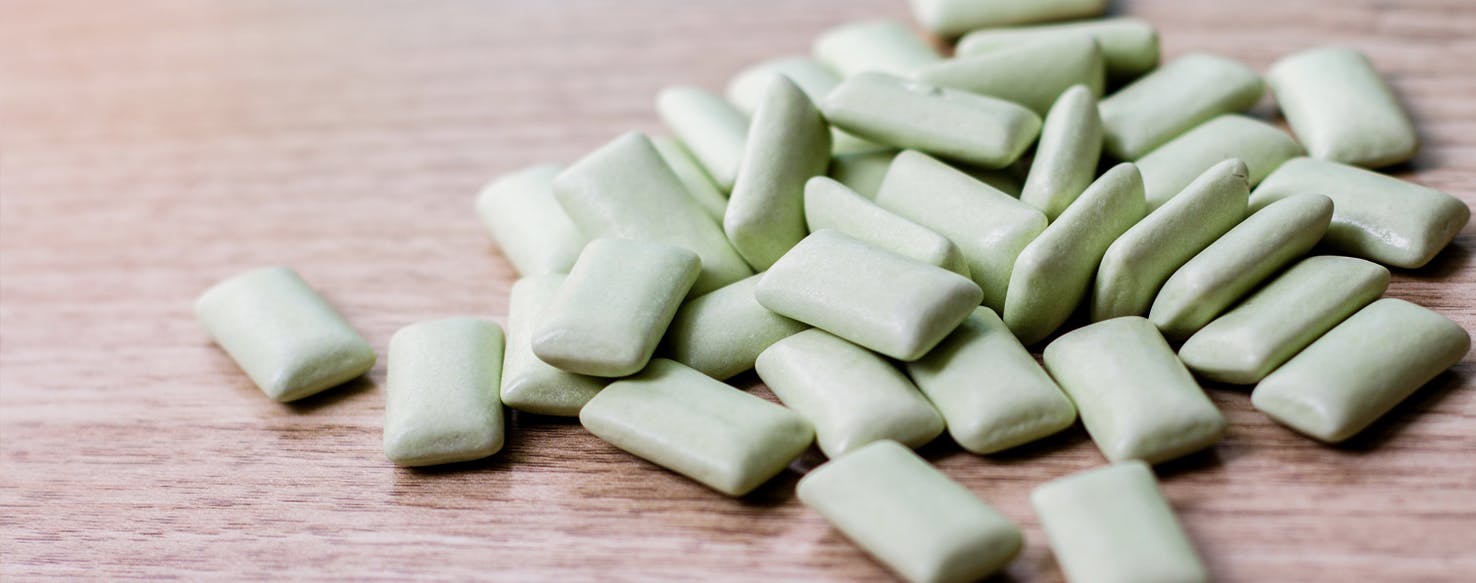- Home
- Dog Wellness
- My Dog Ate Chewing Gum – What Do I Do Now?
4 min read
My Dog Ate Chewing Gum – What Do I Do Now?

Save on pet insurance for your pet
You don't have to choose between your pet and your wallet when it comes to expensive vet visits. Prepare ahead of time for unexpected vet bills by finding the pawfect pet insurance.
You walk into the living room to find chewed up gum wrappers on the floor and a sheepish looking dog. It appears that your dog has managed to chow down on several sticks of your favorite gum. In a panic, you call your local vet to find out what you should do next. Thankfully, the receptionist knows what to do and starts asking you a series of questions designed not only to find out what happened, but also to help calm you down.
The Solution Starts with Asking the Right Questions
In order to determine how serious the situation is, you need to be able to answer a series of very important questions. These include:
-
Whether the gum was sugar-free and what the ingredients are
-
How much gum your dog ate
-
How long ago he ate it
Then, of course, there are questions like "Is your dog showing any symptoms?" and "how much does he weigh? The answers you give are going to provide vital clues to the vet regarding how much danger your dog is in and what, if any, type of treatment may be needed.
The good news is that if the gum your dog decided to eat is standard sugared gum, you can breathe a sigh of relief. This type of gum, depending on how much your furry friend chewed on, is relatively harmless. If he ate a lot of it, your dog is likely to suffer some digestive distress. If he is a small dog who ate a lot of gum along with some of the foil wrappers, it could form a blockage in his intestines, but this is relatively unlikely.
Oh, But It was Sugar-Free Gum
This is where the real problem begins, as many brands of sugar-free gums use xylitol as a sweetener. While xylitol is considered safe for human consumption, it has been found to be highly toxic to dogs. This sweetener can also be found in candies, baked goods, toothpaste, breath fresheners, mints, and many other foods and beverages.
The biggest problem with your dog ingesting even a small amount of xylitol is that it can cause a massive surge in the release of insulin that can occur within as little as 30 minutes. This can cause your dog's blood sugar levels to crash to dangerously low levels. In turn, this can cause hypoglycemia (extremely low blood sugar levels) and lead to shock. It can also cause the delayed onset of liver failure.
What Should You Do?
Be prepared to take your dog the vet immediately if he ingested gum that contains xylitol and remember to take the gum packaging with a legible list of ingredients on it with you. This will help the vet to determine how much xylitol your dog has consumed. Bear in mind that a single sugar-free mint can contain up to 1.0 gram of this sweetener. According to the Pet Poison Helpline, a single gram of xylitol is enough to be potentially fatal to a 10-pound dog.
Since time is very important in this situation, your vet may have you induce vomiting in your dog to clear the gum and xylitol out of his stomach if the event occurred recently. If it was quite a while ago, he may ask you to bring your dog in for a blood glucose level check. In this case, it may be necessary for your dog to remain at the vet's office for a day or two while the vet monitors his blood glucose levels. He may also need to give your dog dextrose intravenously to help keep his blood sugar levels stable until the xylitol clears his system.
While the xylitol can cause damage to your dog's liver, this typically takes a little longer. The vet may choose to monitor his liver enzymes for the next few days to make sure there are no signs of inflammation that can lead to liver failure. The vet may also put your dog on pre-emptive therapy to protect his liver using milk thistle, SAMe, or vitamin K1.
Simple Prevention
If you are lucky enough that the only issue caused by your dog eating sugar-free gum is low blood sugar, the prognosis for a full recovery is good. However, if it has caused liver damage, veterinarians say the prognosis is guarded at best and more likely to be poor. The best thing you can do is make sure that any products containing xylitol in your home are kept well out of the reach of your dog. An ounce of prevention is always worth a pound of cure.
Paying to treat xylitol poisoning out of pocket can be a major financial burden. Fortunately, most pet insurance companies reimburse claims within 3 days, putting 90% of the bill back in your pocket. In the market for pet insurance? Compare leading pet insurance companies to find the right plan for your pet.
You may also like
